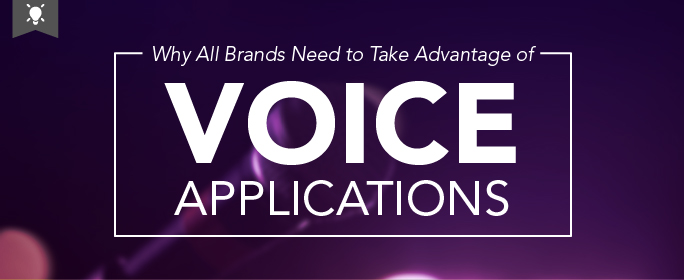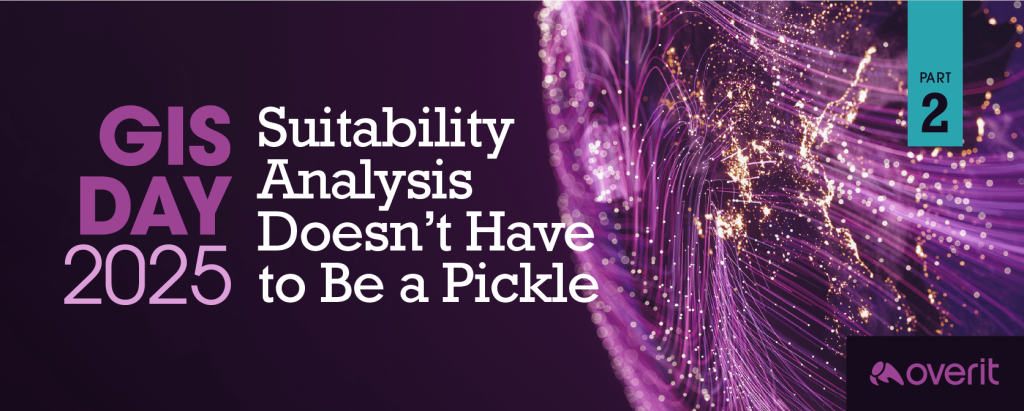
Voice search. Voice applications. Voice technology.
Once a buzzword, voice technology is quickly becoming a necessity for brands who want to form deeper, more meaningful relationships with their customers and target audience. With over 55% of US households predicted to own a voice-enabled smart speaker by 2022, this growing market is set to offer significant opportunities to the brands that embrace it in the coming years.
What is a Voice Application?
Voice Applications are platforms that use voice technology to accomplish a variety of goals. From Amazon’s Alexa, to “Ok Google”, to Samsung’s Bixby, to Microsoft’s Cortana, more and more of the tech giants are jumping into the voice application ring – and more and more brands are taking advantage of this new opportunity to get in front of potential customers by creating apps and “skills,” and optimizing their websites to better interact with these platforms.
Additionally, many brands are incorporating voice into their own proprietary applications, like Dominos’ voice ordering capability and PayPal’s voice-authorized payment functionality.
So Why Should You Care About Voice?
In the marketing world, trends can come and go. Remember when QR codes were all the rage? So why should brands care about this newfangled voice technology?
Your Customers Are Using It
One of the most important rules of marketing is “hang out where your customers are hanging out.” This means being present in the media they consume, the social platforms they engage on, and the technologies they bring into their home. 72% of people who own voice-activated speakers say that their devices are used as part of their daily routines, according to Google. If your customers are there, why aren’t you? Which brings me to my next point…
It’s Taking Over
There will be an estimated 21.4 million smart speakers in the US by 2020, according to Activate. The earlier brands get into this game, the more time they will have to finesse their strategy before the market gets saturated.
It Offers Richer Brand Experiences
We all know that brands are important. And having a strong presence on a voice application gives an additional, human element to your brand – an (actual) voice. Have you ever been in another room and heard an Allstate, Progressive, Geico, or Aflac commercial, and known exactly who the commercial was for, just by hearing the voice, without even seeing who’s speaking? That kind of brand recognition is something voice applications can bring to any brand, whether or not you have the budget for a spokesperson who appears on nationally-placed television commercials.
OK, So How Can I Use Voice Applications?
Whether you’re developing your own voice application like Dominos, or creating a “skill” on a platform like the Amazon Echo, brands can take advantage of this growing market in unlimited ways.
Broadly, voice applications fall under the tenet of “the easier you can make it for someone to do what you want them to do, the more likely they are to do it.” Each of the strategies we’ll discuss below make something easier for customers in one way or another. Thinking about how you can make your brand experience more streamlined for your customers is the first step in determining how your business can use voice applications to your advantage.
That said, here are a few of our favorite themes to get the ball rolling:
Answer Common Customer Questions
If you provide a product or service that needs to be assembled, cooked, used in a particular way, configured, troubleshot, or anything else that might inspire questions from your customers, taking advantage of a voice application is a great opportunity for you. A quick talk with your customer service team may bring to light some common questions or concerns from customers that can be quickly and easily answered via a voice application.
Give Instructions
Similar to the above, if you offer something that needs to be done step-by-step – like furniture that needs to be built, an appliance that needs to be assembled, or a piece of technology that needs to be set up – a voice application is the perfect way to offer these instructions in a more engaging, hopefully less infuriating way than the traditional paper diagrams.
Take Orders & Schedule Deliveries
Uber, Dominos, and British online supermarket Ocado are just some of the brands that allow customers to place orders or requests via voice applications. In 2018, customers are well-versed in the practice of replacing an often tedious or time-consuming task like grocery shopping with an online service or app that can complete these tasks for them. Online grocery delivery service Peapod, for example, has fulfilled over 40 million grocery orders since its inception, most of which incur a $7 delivery fee. If users are willing to pay $7 to not have to go grocery shopping, think of how willing they will be to place their orders without even opening their computers or smartphones.
Book Appointments
It’s an inescapable fact – with the advent of texting, more and more people hate talking on the phone. While online scheduling is becoming more popular, there’s also a budding opportunity for users to schedule appointments, make reservations, request services for their home or car, and more via voice applications.
All-in-all, voice technology is only a small part of the ever-evolving tech landscape that brands must navigate in order to reach their audience. But two things are for sure – voice is getting bigger, and it’s here to stay. Are you ready?





